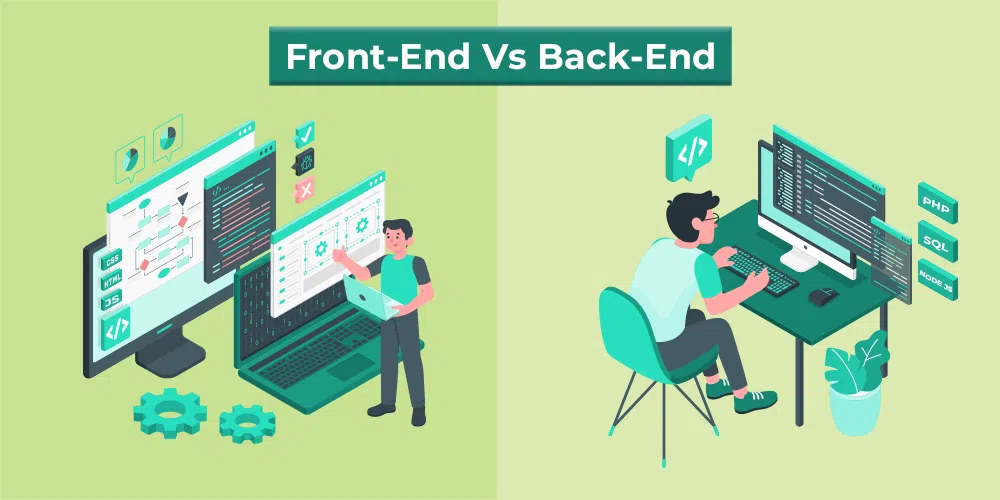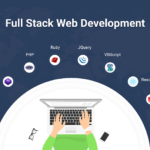Understanding Front-End vs Back-End Development
When it comes to web development, two key areas drive the creation of functional and interactive websites: front-end development and back-end development. While both play essential roles, they focus on different aspects of a website or application. Understanding the distinction between front-end and back-end development can help you make informed decisions if you’re considering a career in web development or simply curious about the process behind building websites.
In this guide, we will break down the core differences between front-end and back-end development, their specific roles, and the skills required for each.
What is Front-End Development?
Front-end development refers to the client-side of a website or application. This is the part that users directly interact with. The primary goal of front-end development is to create an engaging, easy-to-navigate, and visually appealing experience for users.
Key Responsibilities of a Front-End Developer:
- User Interface (UI) and User Experience (UX): Front-end developers work on the design and layout of the website. They ensure the user experience is smooth and that the interface is intuitive.
- Implementing Visuals: They take the visual elements created by designers and implement them using code to build the interface the user will see.
- Responsive Design: Front-end developers ensure the website looks and functions well on various devices, including desktops, tablets, and smartphones.
- Interactivity: They add interactive elements, such as buttons, forms, and animations, to create a dynamic experience for users.
Skills Required for Front-End Development:
- HTML (HyperText Markup Language): The fundamental language for structuring content on the web.
- CSS (Cascading Style Sheets): Used to style the visual elements and layout of the page.
- JavaScript: Adds interactivity to the website, enabling things like drop-down menus, interactive maps, and sliders.
- Front-End Frameworks: Tools like React, Vue.js, and Angular help build complex user interfaces efficiently.
What is Back-End Development?
Back-end development refers to the server-side of a website or application. This part is responsible for managing and storing data, handling requests from the front-end, and ensuring everything runs smoothly behind the scenes. While front-end developers focus on what the user sees, back-end developers ensure the website functions correctly.

Key Responsibilities of a Back-End Developer:
- Server-Side Logic: They create the logic that makes the website or application functional. This includes handling user inputs, processing requests, and delivering data to the front-end.
- Database Management: Back-end developers work with databases (e.g., MySQL, PostgreSQL, MongoDB) to store and retrieve data as needed. For example, when a user logs in, their information is pulled from the database.
- Security and Authentication: Back-end developers ensure the security of the website by managing user authentication, encrypting sensitive data, and preventing unauthorized access.
- API Integration: They build and interact with APIs (Application Programming Interfaces), allowing the website to communicate with other services, such as payment processors or external data sources.
Skills Required for Back-End Development:
- Programming Languages: Common back-end languages include PHP, Ruby, Python, Node.js, and Java.
- Databases: Knowledge of SQL-based databases (MySQL, PostgreSQL) and NoSQL databases (MongoDB, Cassandra).
- Version Control: Back-end developers use tools like Git to manage code versions and collaborate with other developers.
- Web Servers: Familiarity with web servers like Apache or Nginx is essential.
- API Development: Back-end developers create and manage APIs to ensure smooth communication between the front-end and other web services.
Key Differences Between Front-End and Back-End Development
| Aspect | Front-End Development | Back-End Development |
|---|---|---|
| Focus | User interface, design, and user experience. | Server-side, databases, and application logic. |
| Languages Used | HTML, CSS, JavaScript, React, Angular, Vue.js | Python, Ruby, Java, PHP, Node.js, SQL, MongoDB |
| Job Role | Creates the part of the website users see and interact with. | Manages the data and functionality behind the scenes. |
| Key Tasks | Layout design, interactivity, responsive design. | Server scripting, database management, API integration. |
| Tools Used | Text editors, browsers, front-end frameworks (React, Vue) | Databases, server-side languages, APIs, cloud platforms. |
| End Goal | To ensure a pleasant user experience. | To ensure the website functions efficiently and securely. |
Full-Stack Development: Combining Both Worlds
In addition to front-end and back-end development, there is also the role of full-stack developers. Full-stack developers are skilled in both front-end and back-end technologies, allowing them to work on the entire web development process, from designing the user interface to managing databases and server-side logic.
Full-Stack Developer Skills:
- Front-End Knowledge: Proficiency in HTML, CSS, JavaScript, and front-end frameworks.
- Back-End Knowledge: Knowledge of server-side programming languages, databases, and APIs.
- Problem-Solving: Full-stack developers are often called upon to solve problems that span both the front-end and back-end of the website.
Why Both Front-End and Back-End Are Crucial
Both front-end and back-end developers are essential for creating a functional and user-friendly website. While front-end development focuses on the visual aspect and user interaction, back-end development ensures the website or application runs smoothly by managing data, logic, and security.
A successful website requires both areas to work seamlessly together. Without front-end developers, users would have no interface to interact with. Without back-end developers, the website wouldn’t have the functionality it needs to process requests, retrieve data, or maintain security.
Conclusion
Understanding the differences between front-end and back-end development helps you appreciate how web development works as a whole. Whether you’re interested in creating engaging interfaces (front-end) or building robust, secure systems (back-end), both roles are equally important in the development process. Many developers choose to specialize in one area, but for those who enjoy a broader scope, full-stack development offers the opportunity to work on both sides of web development.
By understanding the responsibilities and skills required for each, you can make better decisions about which area of web development to pursue or how to assemble a well-rounded development team.


